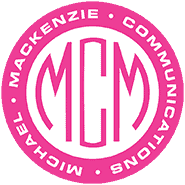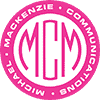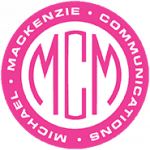When I attended journalism school back in the day, writing a “salesy” news release for a class assignment was a one-way ticket to a failing grade. Today news releases are not just for the media. They can be an important component of customer relations as well. The key when writing a news release is knowing your audience and setting clear goals for what you wish to accomplish with the news release. If you intend for the news release to go to your customers, then by all means make it salesy, but if you want to develop news releases that reporters will run, follow these guidelines.
Just the Facts, Ma’am
If your goal is to have media outlets run your news as a brief or even interview you further about the announcement, you’ll increase your chances by sticking to the facts. No journalist worth his or her salt is going to run what amounts to a sales brochure on their “news” site or in their magazine.
Know Your Audiences’ Audiences
Everyone has an agenda. An editor’s agenda is to provide readers with useful information so they will continue to read their newspaper, magazine or online news site. A good news release explains who should care about its message, why they should care and what results they can expect to gain IN THE EMAIL SUBJECT LINE, IN THE HEADLINE and IN THE FIRST PARAGRAPH.
Journalists receive hundreds or even thousands of news releases a day. You only have a split second to explain why your news is of interest to their readers before they hit the delete button. I can’t tell you how many news releases I’ve seen that don’t get to the actual value proposition until the quote in the last paragraph of the news release.
An added bonus to moving the “why should I care” language to the top is that you will establish the people at your company as experts in your field and set yourself up to author articles on the topics addressed in your news release.
Just Because It’s Important to Your Company, Doesn’t Mean It’s Important to Editors
It’s a hard pill to swallow sometimes… especially when your leadership and marketing team is fired up about a new product or service. You’ve lived and breathed it for months, maybe years and now you’re ready to share that excitement with the world. All of that energy can and should go into your sales brochures, on your website and in your advertising and social media. A news release, however, is a different animal.
Your company is the gatekeeper for every aspect of marketing except media relations. Editors are the gatekeepers of their domain, so you have to speak their language to gain access. Excessive exuberance, unattributed claims and self-serving language closes a door with the news media and trade journals and damages your reputation for future announcements. The keys to opening that gate are statistics and tie-ins with industry trends. News organizations cater to large groups. It’s important to make the connection between your news and the needs of the magazine’s readers. And it will be different from publication to publication.
Taking the time to understand the kind of information media outlets want and tailoring your pitch to meet that expectation will make all the difference in whether your news makes the cut or gets lost in the shuffle.
What makes a successful news release?
Always lead with the most important information, then explain why the reader should care. Include all the pertinent facts and make it easy for journalists to pull a quote from the release.
Here is an example of how to start an effective news release featuring a fictitious company launching a new product:
Award-winning Managed Solution ProviderABC Company Launches New End-to-End 24/7 IT Solution at Such and Such Trade Show
New Product Improves Business Processes and Saves Companies Money
This headline works because it leads with the most important information: Managed Solution Provider ABC Company has a new offering. Then it explains why you should care: the new service will improve business processes and save money for the companies that use it. And it touts the company in a factual way. If your company has won any awards, it’s award winning. Sadly, this information sometimes gets buried in a quote in the last paragraph of a news release.
Here is an example of how ABC Company’s news release headline can get mucked up:
Industry Leading U.S. Technology Company Launches New Solution at Such and Such Trade Show
Whiz Bang Product Does Whiz Bang Things
This headline doesn’t work because it starts with an opinion. “Industry Leading” is subjective and that’s the opposite of “news.” You may have spent months coming up with the perfect name for your product or service, but if you just name it and don’t qualify what it is in the headline, you’ll lose reporters’ attention.
What the product or service does and how it does it may be really cool to you and your employees, but being cool isn’t the point. The end result of how your product or service helps organizations to accomplish their business goals is the point. It answers the “who cares” question that’s in every reporter’s mind when he or she reads a headline.
The headline is the most important part of the news release and will determine whether or not you grab journalists’ attention and gain coverage of what you are announcing. Make it effective by sticking to the facts, being descriptive and explaining how the news impacts readers.
This post courtesy of Media Relations Manager Angela McMahon.


